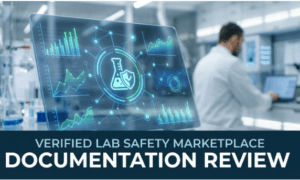The shift to a hybrid workspace has necessitated a reevaluation of our communication strategies. As companies blend remote and in-office work arrangements, the challenge to maintain clear and effective communication has never been more critical. Here, we look at six pivotal communication tips and tools vital for thriving in a hybrid workspace. These strategies can help professionals enhance their collaborative efforts and ensure that every team member, whether at home or in the office, feels connected and engaged.
Emphasizing Clear Expectations
The cornerstone of any successful communication strategy in a hybrid workspace is setting clear expectations. This goes beyond just defining job roles; it involves clarifying when to be online, how to share updates, and the preferred tools for different types of communication.
For example, team meetings might be best suited for video calls, while quick updates can be effectively handled via instant messaging platforms. By establishing these norms upfront, organizations ensure that all team members—regardless of their physical location—are on the same page, which minimizes confusion and enhances productivity.
Bridging the Gap Between Remote and Hybrid Work
With many organizations adopting remote work, the transition to a hybrid model can seem like a natural progression. However, it’s important to recognize the similarities and differences between these two models to streamline communication. Both remote and hybrid setups demand a high degree of digital proficiency and an emphasis on asynchronous communication options to accommodate different work schedules and time zones.
The key in a hybrid model is to leverage these remote work practices while also making room for in-person interactions, which can enhance relationship-building and team cohesion. Understanding these similarities helps in crafting a communication framework that is inclusive and effective.
Leveraging Technology to Simplify Physical Presence
In a hybrid work environment, technology serves as the bridge between virtual and physical workspaces. Effective use of tech tools can significantly enhance communication efficacy. For example, desk booking software plays a pivotal role in hybrid models by simplifying the logistics of who comes into the office and when.
This technology not only helps manage physical space but also supports planning and collaboration by ensuring team members who need to work closely can be in the office at the same time. By integrating such tools, organizations can make it easy and stress-free for employees to come into the office, fostering a more flexible and responsive working environment.
Establishing Regular Check-Ins
Regular check-ins are a critical component of successful communication in a hybrid workspace. These can be structured as weekly one-on-one meetings or team catch-ups via video conference. The aim is to create a consistent flow of communication and to provide a platform for discussing progress, addressing concerns, and sharing feedback.
For hybrid teams, these check-ins help replicate the informal interactions that often occur naturally in an office setting, ensuring that remote team members don’t feel isolated. Furthermore, these sessions can also serve as a vital feedback loop, helping managers gauge the pulse of their teams and adjust strategies as needed.
Creating a Unified Communication Hub
To avoid the pitfalls of using multiple communication platforms, which can lead to miscommunication and information silos, successful hybrid teams consolidate their communication within a unified hub. This hub can include tools for instant messaging, video conferencing, file sharing, and project management.
By centralizing communication, all team members, irrespective of location, have equal access to information and updates. This setup not only simplifies workflows but also enhances transparency and accountability, as everyone knows where to find the information they need without the hassle of navigating through multiple systems.
Fostering a Culture of Open Communication
The final piece of the communication puzzle in a hybrid workspace is fostering a culture where open communication is encouraged and valued. This involves more than just providing the right tools and systems; it requires a mindset shift where all team members feel safe and encouraged to express their ideas and concerns.
Leaders in a hybrid environment should lead by example, sharing not just successes but also challenges and failures. Encouraging team members to communicate, speak up, ask questions, and offer feedback creates an environment where everyone can contribute to their fullest potential, thereby enhancing overall team performance and morale.
Mastering communication in a hybrid workspace isn’t just about overcoming logistical challenges—it’s about creating an environment where every team member can thrive. As we navigate this new way of working, those who prioritize and refine their communication strategies will be the ones to succeed in the hybrid era. Effective communication is not just a necessity—it is the linchpin of organizational success.
Read more from techbullion



































